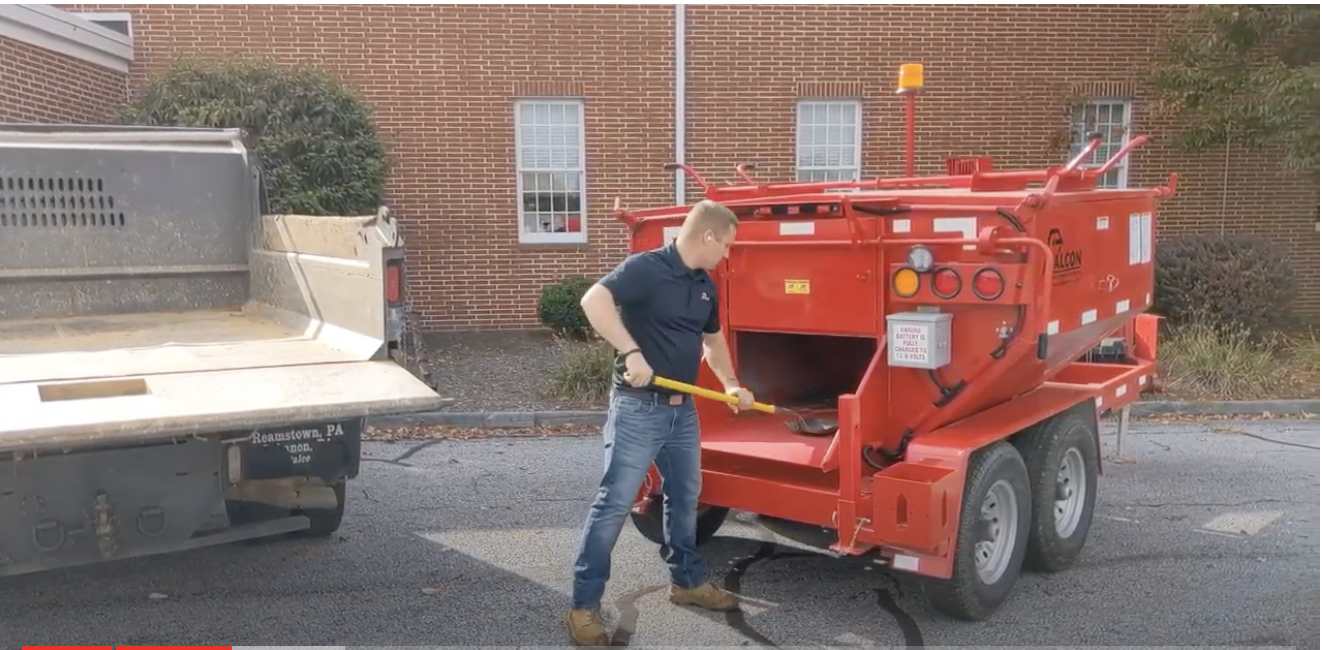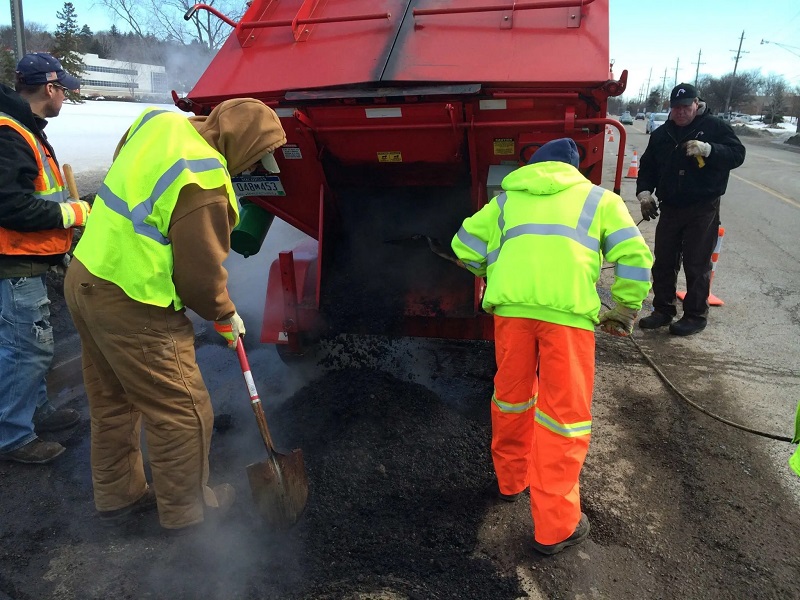Asphalt hot boxes and patch trucks help work crews make more effective pothole repairs while keeping asphalt material at optimal temperatures. However, that’s where the similarities stop. Read on to learn more about the differences between the two and discover which works best for your patching operations.
What Is an Asphalt Hot Box?
A hot box is a specialized machine designed to transport, store, and maintain the ideal temperature of hot mix asphalt. By keeping the temperature between 250°F and 350°F, hot boxes ensure the material remains pliable and suitable for use over an extended period.
Falcon hot boxes take this concept several steps further with an innovative design and features that can significantly increase ROI over traditional methods, such as using a dump truck. Our hot boxes come in a wide range of sizes, including multi-ton trailers and truck mounts.
How Hot Boxes Work
Onboard propane or diesel burners fire into the box to keep the material at an optimal temperature throughout the day and overnight.
Hot boxes come in various configurations, capacities, and options.
- The Dump Box has two hydraulic cylinders that raise the hopper and allow easy asphalt offloading.
- The Trailer offers a more economical solution to transport asphalt, especially when built with only one burner.
Hot Boxes vs. Dump Trucks
It’s extremely challenging for work crews to keep asphalt material at the optimal working temperature when using a traditional dump truck. The material begins to cool the second they drive away from the asphalt plant. Asphalt below a certain temperature becomes exceptionally challenging to work with and can slow worker productivity.
Dump trucks also have an awkward shoveling height. Workers are forced to lift a heavy shovelful of material over their shoulder height to remove it from the truck. This slows down productivity and increases employee fatigue.
Hot boxes offer a much lower shoveling height, which helps increase worker productivity and can cut down on injuries. The hot box also keeps the asphalt material at the ideal temperature throughout the day and night.



Recent Comments